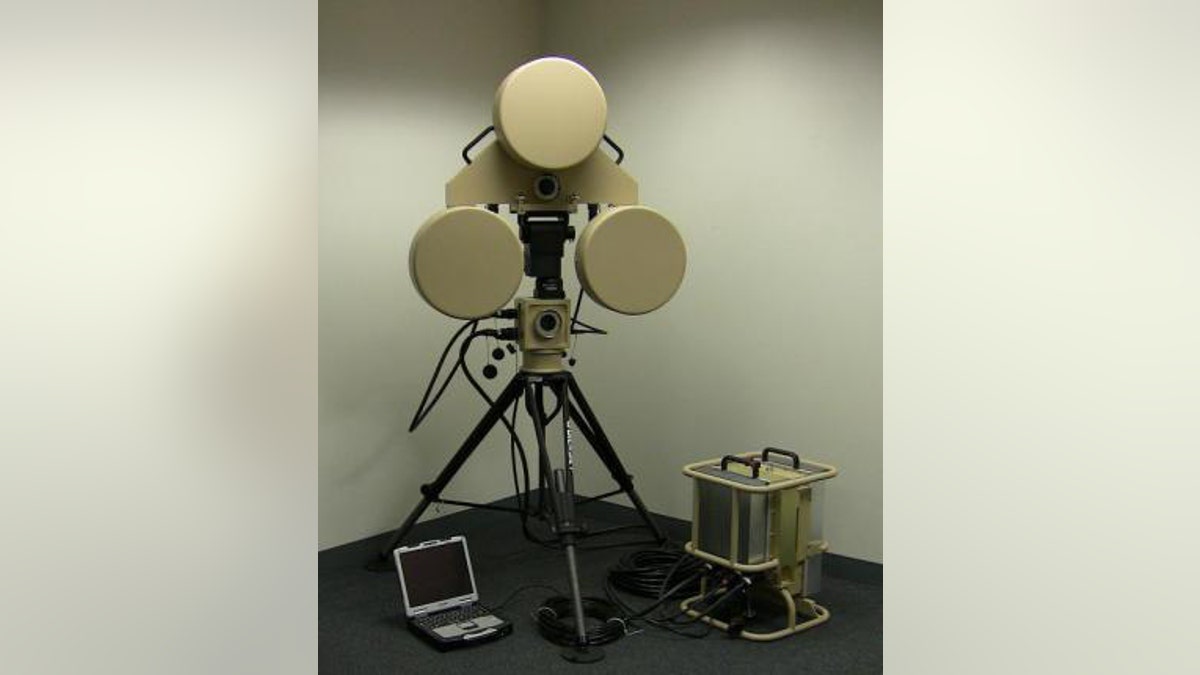
CounterBomber (Rapiscan Systems).
CounterBomber can help protect cities from terrorists by revealing their concealed suicide explosive vests.
Deployed by security forces around the globe, the CounterBomber system can automatically detect suicide vests and other person-borne threats at a distance that allows law enforcement and the military to intervene.
Made by Rapiscan, CounterBomber was on show at the Milipol 2015 exhibition in Paris last week.
Related: Milipol Paris 2015 in pictures
With this tech, terrorists carrying threats can be quickly detected before they gain access to places with a high density of people – places like stadiums and concert venues such as those targeted by terrorists in the recent Paris attacks. It could also be used to protect people in transport hubs such as airports, subways and train stations.
By detecting a terrorist with a suicide vest early, the technology gives forces the opportunity to try to stop the perpetrator before people are harmed.
In addition to hidden explosives, Rapiscan says the technolgy can also detect other threats that have been concealed like handguns and rifles.
Related: Beretta shows off new battle rifle
The U.S. government has tested CounterBomber for suicide vest detection and tested it against both men and women hiding explosives.
The specific test results are classified secret. The technology has been deployed by the U.S. military and other all over the world, according to Rapiscan.
How does it work?
Easily transportable and quickly assembled, the system weighs about 250 pounds.
Related: Why France's Rafale fighter jet is a key weapon against ISIS
CounterBomber can be configured to automatically assess for threats – without the need for an operator interpreting data. Designed to be intuitive, users require very little training.
To quickly assess approaching people and identify whether they are concealing any threats, the tech harnesses state-of-the-art radar signal processing and video tracking tech.
According to Rapiscan, the detection time to identify an approaching threat is within 3 to 5 seconds.
Scanning and searching for threats is done safely, according to Rapiscan. The technology employs a video-steered radar sensor. While some screening technology has fueled privacy concerns, CounterBomber does not involve imaging, according to the manufacturer.
In environments such as a stadium, CounterBomber can help accelerate the process of fans being screened as they enter the site while improving safety and security.
In addition to protecting civilians, automatic detection means reducing risk to security personnel and frees them up to focus on other tasks to ensure security.




















